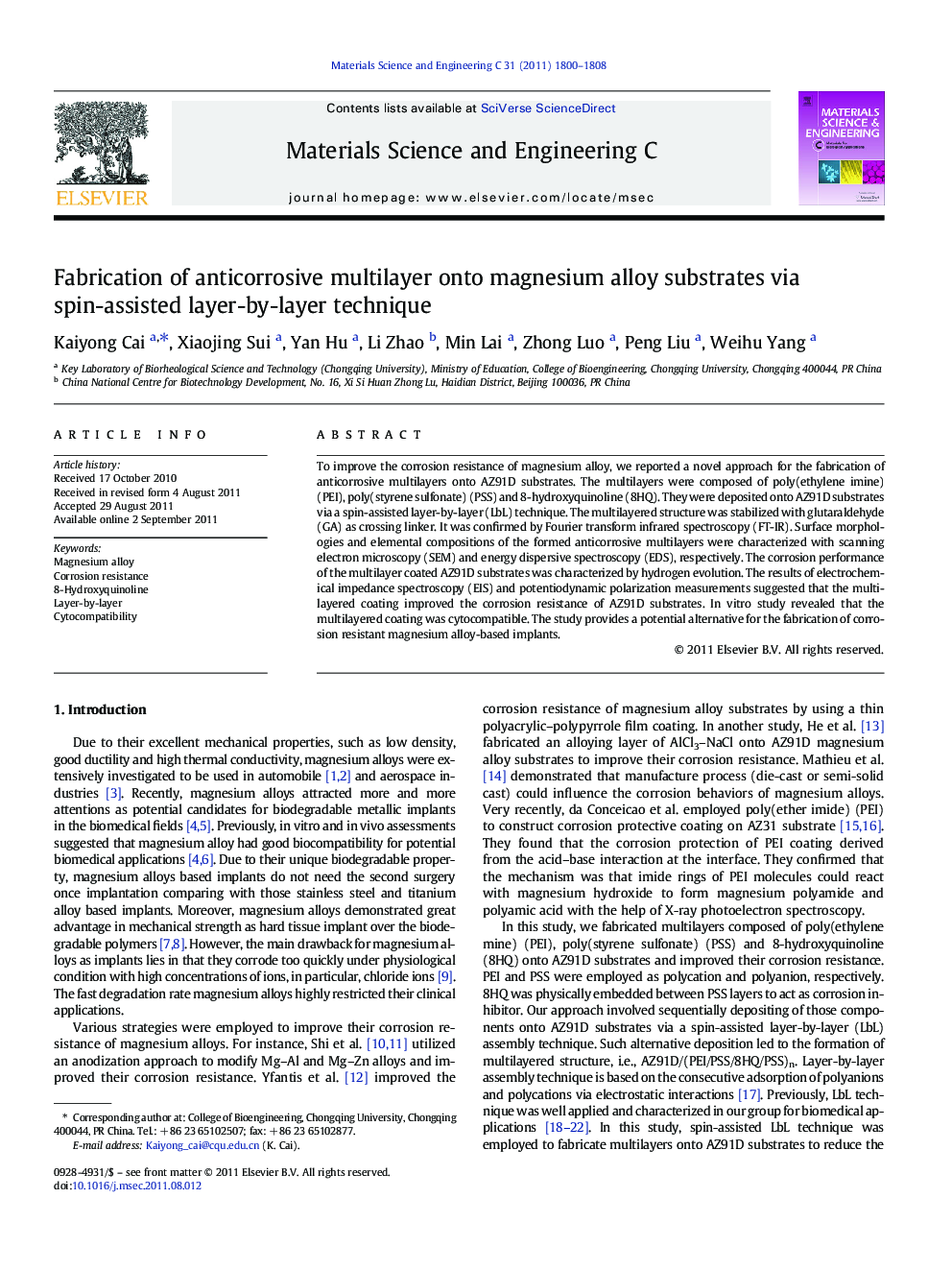| Article ID | Journal | Published Year | Pages | File Type |
|---|---|---|---|---|
| 1429835 | Materials Science and Engineering: C | 2011 | 9 Pages |
To improve the corrosion resistance of magnesium alloy, we reported a novel approach for the fabrication of anticorrosive multilayers onto AZ91D substrates. The multilayers were composed of poly(ethylene imine) (PEI), poly(styrene sulfonate) (PSS) and 8-hydroxyquinoline (8HQ). They were deposited onto AZ91D substrates via a spin-assisted layer-by-layer (LbL) technique. The multilayered structure was stabilized with glutaraldehyde (GA) as crossing linker. It was confirmed by Fourier transform infrared spectroscopy (FT-IR). Surface morphologies and elemental compositions of the formed anticorrosive multilayers were characterized with scanning electron microscopy (SEM) and energy dispersive spectroscopy (EDS), respectively. The corrosion performance of the multilayer coated AZ91D substrates was characterized by hydrogen evolution. The results of electrochemical impedance spectroscopy (EIS) and potentiodynamic polarization measurements suggested that the multilayered coating improved the corrosion resistance of AZ91D substrates. In vitro study revealed that the multilayered coating was cytocompatible. The study provides a potential alternative for the fabrication of corrosion resistant magnesium alloy-based implants.
► Corrosion protective multilayers have been constructed onto AZ91D substrates via layer by layer technique. ► The multilayered structured containing 8-hydroxyquinoline highly improves the corrosion resistance of AZ91D substrates. ► The novel multilayered coating is potentially important for developing corrosion resistant magnesium alloy-based implants.
